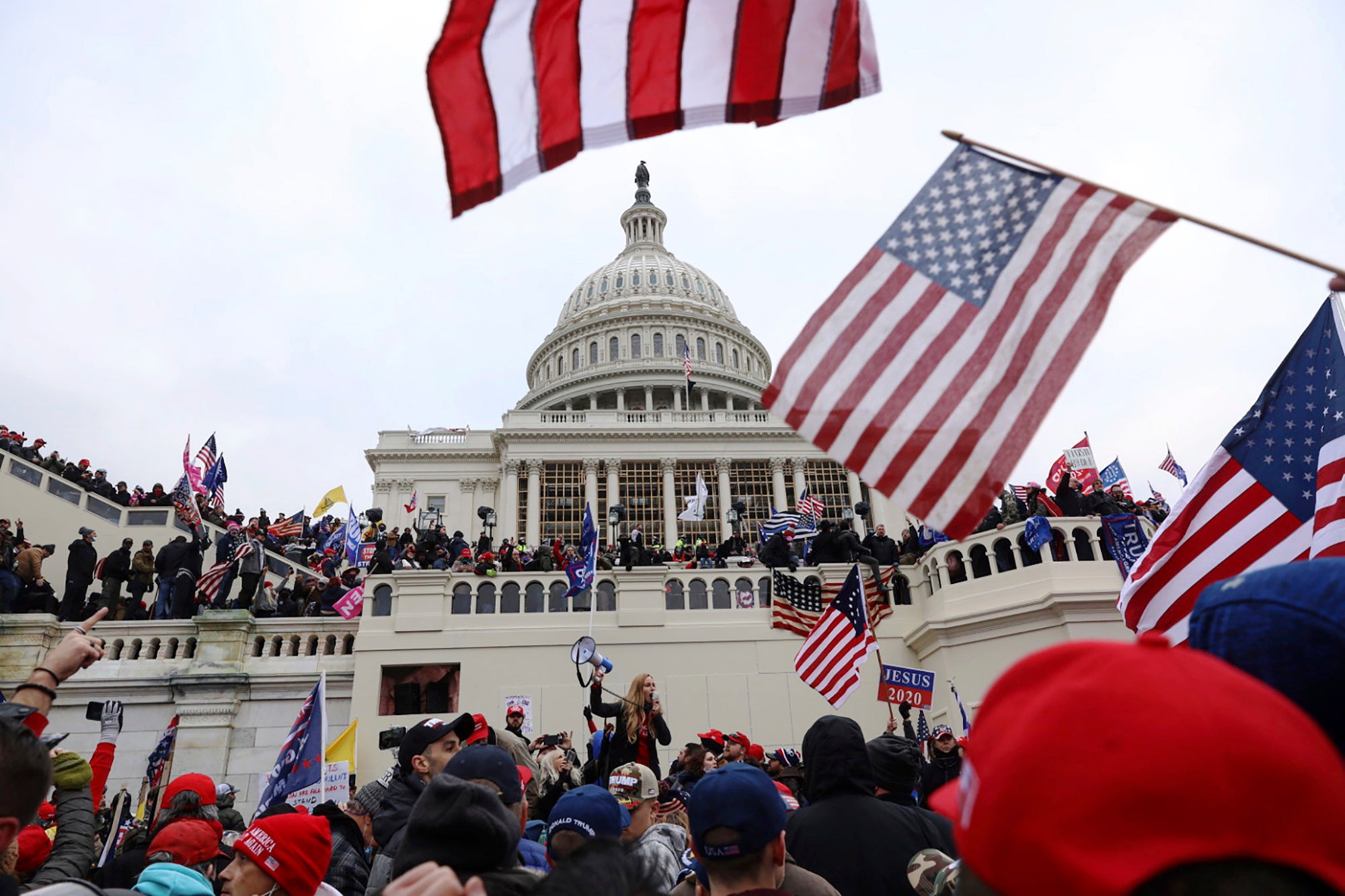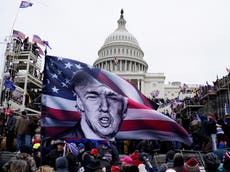I was a violent white supremacist – I know hate groups like the Proud Boys won’t disappear with Trump
Publicly, the Proud Boys claim to just be a group of “western chauvinists”. But in reality, they are a gang modelled after white power skinheads from the ‘80s and ’90s

Your support helps us to tell the story
From reproductive rights to climate change to Big Tech, The Independent is on the ground when the story is developing. Whether it's investigating the financials of Elon Musk's pro-Trump PAC or producing our latest documentary, 'The A Word', which shines a light on the American women fighting for reproductive rights, we know how important it is to parse out the facts from the messaging.
At such a critical moment in US history, we need reporters on the ground. Your donation allows us to keep sending journalists to speak to both sides of the story.
The Independent is trusted by Americans across the entire political spectrum. And unlike many other quality news outlets, we choose not to lock Americans out of our reporting and analysis with paywalls. We believe quality journalism should be available to everyone, paid for by those who can afford it.
Your support makes all the difference.If the violent far-right siege on the Capitol didn’t signal to American politicians and law enforcement that the US has an extremist radicalisation problem and that hate is not just a hoax, let my eight years of experience as a violent white supremacist, and the subsequent 25 years since that I’ve spent denouncing my past racist beliefs and working to educate others, serve as a warning.
During Donald Trump’s presidency, I worried his words were stoking fear and inciting acts of violence. After the presidential debate in which Trump provided the Proud Boys, a cadre of violent far-right thugs, with marching orders to “stand by”, I feared an event like January 6 would come.
Publicly, the Proud Boys claim to just be a group of “western chauvinists”. But in reality, they are a gang modelled after white power skinheads from the 1980s and 90s – the latest iteration of the monster I helped build all those years ago. The white supremacist movement had morphed from my days, when we were very visible with shaved heads, black boots, and tattoos, and we recruited young people at skate parks, punk rock concerts, and the fringes of high school parking lots.
Over time, a strategy unfolded that found value in presenting a more sanitised hate movement to the mainstream. Members started dressing to blend in instead of intimidate, and began taking jobs in law enforcement, or joining the military, even enrolling in universities. Recruitment and radicalisation took place not only in those spaces but also online.
The Proud Boys, however, have rallied around the idea of bringing back the in-your-face hate of their skinhead forebears. They thrive on intimidation and being seen. So, when Trump uttered “stand by'' to this group, it was surreal. I felt a pit forming in my stomach. I knew he wasn’t speaking to just them, he was speaking to all white supremacists.
Extremism flourishes when a critical mass of people believe their lives are becoming meaningless, displaced, or disempowered. Extremists feast on frenzy and uncertainty during times of crisis. The strategy is simple: turn everyday victims into perpetrators of “rough justice” by trading them a “great cause” for their discontent, while fooling them into believing they’re still victims.
Today, more than ever, ideologues at the furthest edges of the political spectrum are using crisis to bait aggrieved, isolated, even privileged and willfully ignorant Americans with glory-driven promises as a panacea for their woes. Enter groups like QAnon, OathKeepers, Three-Percenters, and every other adjacent “hate” group.
I pictured how I, as a 20-year-old neo-Nazi skinhead living on the Southwest side of Chicago, might have responded to something like a call to “stand by” back then. It would have emboldened me, thrust me into action, told me I had the support of the White House and a president who saw me, and a mission of great importance. I would have acted with reverence to that implicit order of violence from upon high. That’s what white supremacists heard that night, and we saw it play out earlier this month.
But while Donald Trump has added fuel to the fire, this problem has been burning for a long time and will not extinguish now that he has left office. We must take serious measures to address increasing right-wing radicalisation. We cannot shy away from the threat of white-supremacist hate and extremism, characterising it as a fringe problem at the bottom of a long list of national threats because we are intimidated by what we might find when we look in the mirror.
No one is born with hate in their heart. I have found this insight to be more powerful than any weapon Smith & Wesson can forge and put into the cold, clammy hands of insurrectionists. For those who align themselves with extremist ideologies, doctrine is the last component that locks into place. Radical ideologies act like green traffic lights, signalling to those who have “stalled” in life where to direct blame for their grievances, anger, and insecurities – sometimes in violent and irrational ways – instead of working to resolve their obstacles in a positive or constructive manner. Feeling newly empowered, the mantra of cruelty that extremists adopt is the fraudulent licence that grants them permission to project their pain onto others.
In the extremist interventions that my organisation, Free Radicals Project, does, we focus on helping people to repair the potholes in their life and restore and redirect their sense of identity, community, and purpose in a more positive direction. But it’s imperative to understand that deradicalisation is only a band aid.
If we can acknowledge that underlying environmental, emotional, and/or physical challenges, or any multitude of challenging life factors, are what give people their first push toward extremism – and not usually the other way around – then hope exists of diverting future generations from its devastating path altogether.
To eradicate hate, we must heal the lingering wounds of our nation’s past failures. We must acknowledge the grave errors we’ve made and be held to account for them. Only then will we embody the strength and idealism we have long professed.
I’m calling on the Biden administration not only to create a commission to understand how we as a nation can bring back the millions trapped in this dangerous spiral of radicalisation, but to confront far-right extremism in the United States and hold people accountable, to analyse how propaganda and misinformation is spread, and how these operations are funded. I offer my help and hope they’re listening.
Christian Picciolini (@cpicciolini) is the founder of Free Radicals Project, an extremism disengagement provider, and the author of ‘Breaking Hate: Confronting the New Culture of Extremism.’



Join our commenting forum
Join thought-provoking conversations, follow other Independent readers and see their replies
Comments